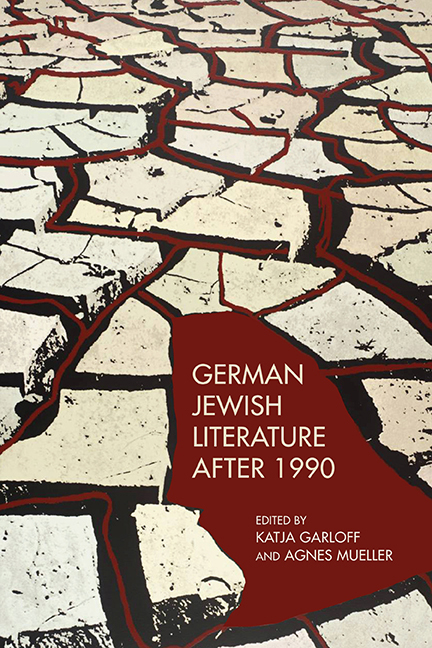Book contents
- Frontmatter
- Contents
- Acknowledgments
- Introduction
- I Self-Reflection in First- and Second-Generation Authors
- 1 What Is a German Jewish Author? Authorial Self-Fashioning in Maxim Biller, Esther Dischereit, and Barbara Honigmann
- 2 (Non-Jewish) German Constructions of (German) Jewish Writing in the Late Work of Günter Grass, Martin Walser, and Christa Wolf
- 3 Revenge, Restitution, Ressentiment: Edgar Hilsenrath's and Ruth Klüger's Late Writings as Holocaust Metatestimony
- II Multiple Identities and Diversification of Holocaust Memory
- III New Themes and Directions in Recent German Jewish Literature
- IV Coda: Interviews with Two Contemporary German Jewish Writers
- Bibliography
- Notes on the Contributors
- Index
2 - (Non-Jewish) German Constructions of (German) Jewish Writing in the Late Work of Günter Grass, Martin Walser, and Christa Wolf
from I - Self-Reflection in First- and Second-Generation Authors
Published online by Cambridge University Press: 07 September 2018
- Frontmatter
- Contents
- Acknowledgments
- Introduction
- I Self-Reflection in First- and Second-Generation Authors
- 1 What Is a German Jewish Author? Authorial Self-Fashioning in Maxim Biller, Esther Dischereit, and Barbara Honigmann
- 2 (Non-Jewish) German Constructions of (German) Jewish Writing in the Late Work of Günter Grass, Martin Walser, and Christa Wolf
- 3 Revenge, Restitution, Ressentiment: Edgar Hilsenrath's and Ruth Klüger's Late Writings as Holocaust Metatestimony
- II Multiple Identities and Diversification of Holocaust Memory
- III New Themes and Directions in Recent German Jewish Literature
- IV Coda: Interviews with Two Contemporary German Jewish Writers
- Bibliography
- Notes on the Contributors
- Index
Summary
IN THEIR INTRODUCTION TO Modern Jewish Literatures: Intersections and Boundaries (2011), editors Sheila E. Jelen, Michael P. Kramer, and L. Scott Lerner note that “the act of defining, circumscribing and demarcating has long been a principle activity of modern Jewish literary scholarship.” Because Jewish writing does not readily map onto a national literature, because certain authors may not even identify as Jewish (or be identified by others as such), and because a given book may not appear to have a Jewish theme—for example, diaspora or the Holocaust—the question of what is and isn't Jewish writing, Jelen, Kamer and Lerner continue, must “remain unsettled.” The volume in which this chapter appears adds to this debate by positing that there is such a thing as a German Jewish literature even as it interrogates this—after the Holocaust—always unavoidably jarring formulation. In her 1994 edited volume What Is Jewish Literature?, the Israeli scholar Hana Wirth-Nesher had already pondered whether the question in the book's title was in fact the only thing that unified scholars searching a definition that could encompass Jewish languages— that is, Hebrew, Yiddish, Ladino—non-Jewish languages, and the diversity of diasporic and non-diasporic writing both in the past and in the present.
Attempts to define Jewish literature often also suggest a designation of Jewish identity. Jewishness is posited as uniquely located between particularism and universalism, as assimilated or exceptional, or as productively diasporic or lamentably exilic. Or, Jewish identity is seen to be irreversibly marked by the Holocaust. In any event, the categorization of Jewish writing, and Jewish identity, is understandably taken to be first and foremost a primary interest of self-declared Jewish authors. This is most likely implicit in the present volume, in which a variety of contributions address the literary work of Jewish authors writing in German about their identity and their place in Germany and Europe.
This chapter explores what is at stake when non-Jewish authors concern themselves with definitions of Jewish literature, either when they reflect abstractly on what might constitute a “Jewish aesthetic” or concern themselves more concretely with particular Jewish writers or literary traditions.
- Type
- Chapter
- Information
- German Jewish Literature after 1990 , pp. 38 - 59Publisher: Boydell & BrewerPrint publication year: 2018

